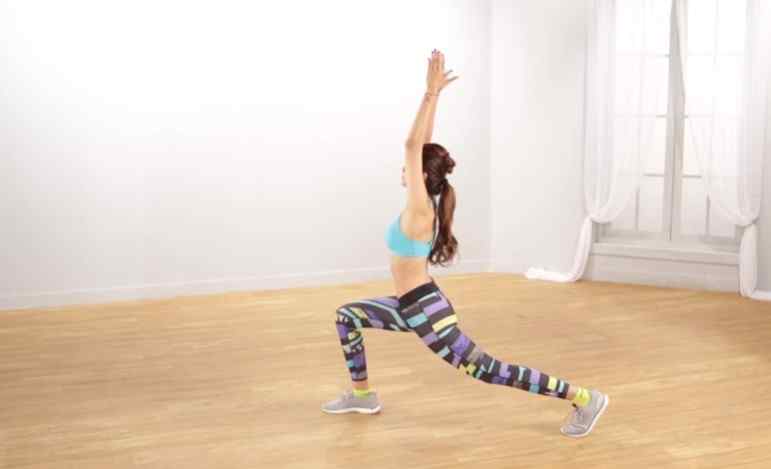With the world battling a constant war against obesity, it is not surprising that every day we have something new on the table. Each method or equipment self-proclaims themselves to be the best weapon to win against obesity, but in the end, the result seldom is a great one. Lets see exercise on low carb diet.
What actually can battle obesity best is nothing but a proper diet plan and the right amount of exercise. Shortcuts and equipment can only assist for the time being but not for a very long tenure.
One of the most effective ways to a healthy and gradual weight loss without causing any ill effects on the body is by implementing a low carb diet alongside a regular workout routine. Seven most useful tips for managing exercise while on Low Carb Diet includes –

Begin with a mini warm-up routine
It is essential to remember never to begin a workout routine straight away. Stretching and relaxing the joints and muscles is extremely important before any workout routine.
If the muscles and joints are not agile and stretched enough, the chances of cramps and injuries are significantly increased. Besides that, warm-up routines also have an immense psychological effect on the body too.
It helps in conditioning the body and prepares it for the upcoming intense session internally. Warm-up exercise routines can last between 15 to 20 minutes and include Stretching, Squat, joint rotatory movements, spot jogging, etc.
Plan a proper diet under professional guidance
Exercise promotes calorie loss and thus, in turn, resulting in weight loss. However, use also causes loss of energy and nutrients that are essential for the systematic functioning of the body.
To prevent muscular atrophy and fatigue or dehydration related shock, the body must receive the nutrients consistently. Self-planning a diet with the inclusion of protein and exclusion of carbs is not a wise decision.
Professional assistance will not only ensure that the diet plan includes all the necessary nutrients, but it will also help in preventing any medical mishaps that may occur due to insufficient nutrient supply.
It is difficult to self analyze and decide the body requirement of protein fat and carbs just based on the diet chart of other people or internet articles. Every individual has a different body composition with specific individual needs.

Plan your weight training based on your body composition
The concept of the Body Mass Index is fundamental in understanding the requirements of your body. Every individual has a separate set of needs that are never similar.
Based on the study of the BMI and the fat percentage, if workout routines are planned, the results are often much more effective. The body composition analysis gives a clearer picture of all the zones of the body.
This picture helps the trainer plan workout routines based on each area of need and the exact intensity of workout required for every zone. In the end, the weight loss that occurs as a result of the analysis and finalization based on the BMI is uniform and constant.
Introduce high-intensity workout intervals into your routine
The human body has immense potential that we often do not use to its full power. We all go through that one constant thought “I can’t do it anymore” while we are exercising. We are tired and out of breath. This pushes us towards not wanting to see our true potential.
What makes workout routines bring faster results is clubbing short intervals of high-intensity workout in between the regular regime. While high-intensity workout routine is excellent, however, it is best to avoid opting for it continuously.
A few of the best ways of clubbing high-intensity workout intervals with the regular regime are cycling on a recumbent bike, walking/running on Treadmill or elliptical etc. Nowadays getting one through online is easy as top rated elliptical under $500 is readily available.
For instance, you have a plan of running 10 km on the elliptical at the speed of 5 km. You can do it at home at your own convenient time.
Now after running for the first 5 minutes at the set speed, increase the speed to 7 km for the next 2 minutes. As you feel yourself getting fatigued, go back to the regular 5km/hr routine for the next 10 minutes until you are no more out of breath.
Once again increase the speed to 8 km/hr and run for the next 3 minutes until you start feeling breathlessness and discomfort and then go back to the routine.
This combined high and low-intensity workout routine increases the individual stamina and also produces a faster and more effective result.

Keep a check on the electrolyte balance of the body
Exercise tends to burn calories, and that results in profuse sweating. Sweating, in other words, is an excellent indicator of calorie loss. However, sweating causes the loss of essential electrolytes from the body.
Loss of electrolytes may not sound very harmful, but in fact, it is instead the opposite. Elements like Potassium and sodium are essential in maintaining the functioning of the various systems.
Referred to as macro and micro nutrients, these elements are present in a very minimum amount in the body. So losing the required optimal level is also equally comfortable. To prevent such mishaps, we have to keep the body in check.
A constant refill of the lost electrolytes in the form of oral solutions, juices, and pills are essential if you do not want to let your body go into shock caused by an electrolyte imbalance.
Give time to the body to adjust to the changes
The body takes time to show results. Being impatient is not going to help. Once you begin the regime of combining a low carb diet with exercise, the body slowly starts to modify itself accordingly. This phase of adaptation is often called Keto adaptation.
The body slowly begins to use the stored fat to produce the required energy. Fat takes a long time to convert to energy in comparison to carbs. So this means that a low-intensity workout routine suits this phase better.
During the initial few weeks of training, it is better to limit the strain on the body to a low level. This will prevent you from falling prey to fatigue-related injury, prevalent during this period.
Using fat for energy takes longer and is, therefore, better suited for fueling low-intensity exercise. High-intensity exercise benefits more from the efficient and readily-available energy provided by carbs.
During your first week on a low-carb diet, you may want to take it easy with your exercise routine. If you’re feeling fatigued, or like you aren’t performing at your usual capacity, you may be more vulnerable to injury.
To avoid muscular strain cycling on the recumbent bike, yoga and stretching during the first 2 to 4 weeks are the best way to manage this transitional phase.
Precaution is better than prevention
Once in a while, we tend to go overboard with our diet schedule or exercise routine in the hope of getting faster and more effective results. However, in this zeal to do so, we tend to forget about our day to day life medications.
Skipping medications while you are on a weight loss program can cause deterioration of the health ailments. It is also important to discuss beforehand with a professional expert about the regime to follow during the tenure.
Medicines do not hamper your weight loss progress by any means. It is instead a critical shield that prevents your body from unnecessary dangers.





Awesome post! Keep up the great work! 🙂